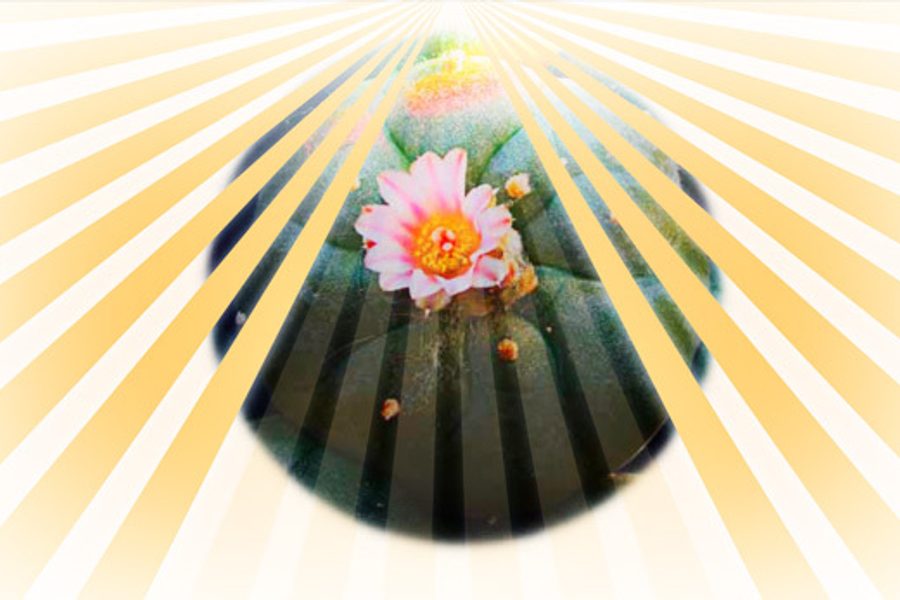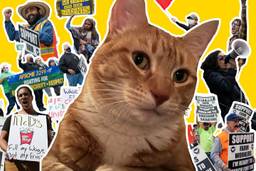
I am sitting in a peace pipe circle of about a dozen people led by a half-Seminole, half-white medicine man named James Mooney. Another man, Jeffrey Bronfman, is shaking black pipe ash into my cupped hands and praying over it as others sit contemplatively, staring at a painted bull skull in the middle of the circle. Mooney blows smoke into the air, and it hovers for a few seconds before floating into the New Mexico desert.
Bronfman is a religious leader known as a mestre in the União do Vegetal (Union of the Plant), a syncretic-Christian church based in South America whose members regularly observe a psychedelic spiritual ritual by drinking a tea known as hoasca, which contains the psychoactive compound DMT. In 2006, the group won a U.S. Supreme Court case regarding its members’ use of the tea.
But even after winning Gonzalez v. UDV, União do Vegetal’s legal troubles continued. Just last year, the issue was concluded with the group finally gaining the right to use hoasca legally, free from the fear of being targeted and prosecuted by federal or state law enforcement.
It bears mentioning that Bronfman, a Canadian, is an heir to the Seagram beverage empire, and – like most members of the União do Vegetal – is white.
Mooney is in his late 60s with long salt-and-pepper hair pulled back into a ponytail. He is the de facto head of the Oklevueha Native American Church, an offshoot of the Native American Church of North America (NAC). Like the União do Vegetal, members of NAC also use a psychedelic substance in their religious ceremonies – except the substance is peyote, which contains mescaline.
This little group, which Bronfman is advising, is gathered for the purpose of challenging the system that allows hoasca, but not peyote, to be used by non-Indian people for religious purposes. To use peyote religiously (i.e., legally), you must possess a card proving you are a federal tribe member – or “on the rolls.”
For thousands of years, indigenous societies of North and South America have used Peyote as a religious sacrament. It wasn’t until recently, however, that American Indians were granted federal sanction to use it. In 1965, a federal regulation legalized the use of peyote by tribal members for religious ceremonies, but a number of states persisted in criminalizing its use for any purpose, religious or otherwise. In 1994, the American Indian Religious Freedom Act was amended to specifically identify peyote as “integral to a way of life” for thousands of Indians, thus providing broad cover across the United States for all traditional ceremonial uses of peyote by Indians.
As explained by Mooney, who is not a recognized member of any federal tribe (or heir to any fortune, ginger ale-related or otherwise), NAC members use peyote to create “a direct line of communication between us and the Great Spirit.” But it remains a Schedule I drug, meaning that it is illegal for anyone who is not a member of a federally recognized tribe to use Peyote in a religious ceremony – even if they are full-blooded Indians.
Despite this prohibition, the Oklevueha NAC has members across the United States, from Indians to Caucasians and Hispanics, with varying degrees of each in between. Its tenets and practices closely mirror those of the larger NAC – except for the fact that they allow complete non-Indians to join.
So to be clear, this is a situation where the federal government dictates who may or may not belong to a particular religion based on race. And not race alone: Race (Native American blood) and political affiliation (federally recognized tribe) are the two criteria. It strains credulity to believe that Americans would accept this arrangement if it were applied to mainstream religion. Take a moment to imagine the blood of Christ being limited only to Italians and those church members able to prove a blood quantum of Italian heritage in order to partake of the sacrament – with the U.S. government standing at the ready should anyone step out of line.
American jurisprudence is a morass of moralizing and prudery taken from 17th century England – all cobbled together with special dispensations for deep-pocketed industries. When religion and consciousness-altering psychedelics enter into the mix, our legal system twists into incoherence.
‘We’re not drug abusers’
“We are only asking for equal treatment,” Mooney says. “We’re not drug abusers. We have this plant that is essential to our religion, and yet we’re told we can’t use it because it’s a drug, and drugs are bad.”
Mooney points out that those authorized tribal members who use peyote religiously on a regular basis are less likely to have substance abuse problems than those who do not. (A Harvard study supports the assertion.) “It’s used to treat alcoholism every day. Those medicine men you hear about? Well, this is the medicine.”
Mooney’s fight has been about more than just words. In 2004, Mooney won a case before the Utah Supreme Court after being charged with illegal use and possession of peyote. Similar federal charges against him were dropped. But Utah has since changed its laws to mirror federal policy, excluding people like Mooney from using peyote. Specifically, Utah requires all persons who would use peyote religiously to be members of a federally recognized tribe.
I ask Mooney whether he is afraid that if non-tribe members earn the right to use peyote openly, drug users will join the church just to get their hands on it. “Sure, it’s an issue, but every religion has charlatans,” he says. “We refuse to allow this beautiful thing to become characterized as a bunch of beatniks doing drugs in the desert.”
Mooney isn’t only worried about the federal government; the larger NAC isn’t happy with him either. It and the Native American Rights Fund have made their position on this issue known: They do not want more people using peyote. Their reasoning isn’t perfectly clear, but many speculate that there just isn’t enough peyote to go around. Mooney and Bronfman say that many federal tribal members want to maintain exclusive access to the substance. It’s a slow-growing cactus that takes years to develop into mature plants that can be used in peyote ceremonies.
The only real way to challenge the law as it stands is via lawsuit. In 2010, Mooney found a small group of attorneys willing to take up his cause, but a lack of funding needed to take on the federal government led to dismissal of the lawsuit. Since that time, Mooney has quietly begun fundraising and gathering plaintiffs (white, mixed heritage and Indian, but non-tribal, people) needed to move forward. But convincing others to join the proposed lawsuit has proven difficult.
“Even Indians that have no problem allowing whites to join our ceremonies, they don’t want to touch this [issue],” he says. “A lot of them don’t want to risk having anything taken away again.”
So Mooney, who looks impossibly youthful for a man in his mid-60s, bides his time. He says he will fight to the bitter end to achieve legal recognition for his church’s use of peyote, so that the law treats all people equally.
While that fight continues, Mooney will discreetly continue to practice as a medicine man and walk the peyote road in the mountains of northern Utah, at peace with nature and the universe.
A criminal in the eyes of the government, Mooney will continue to guide the misguided and worship as his spirit compels him to – even as he worries that someone is coming for him.





